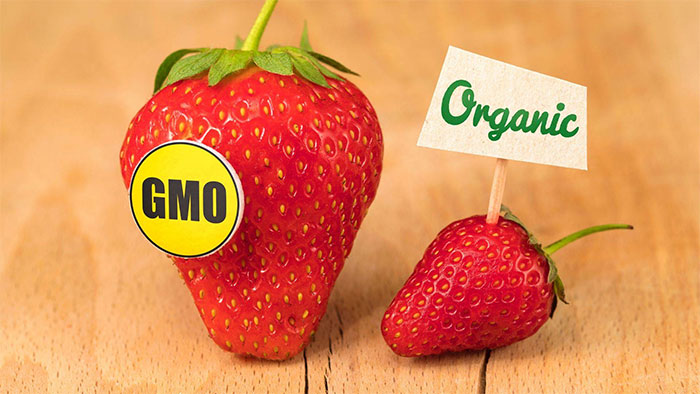Are genetically modified foods really scary?
All over the world, people regularly produce genetically modified soybeans, corn, cotton, alfalfa, canola, apples, papayas, potatoes, summer squash, sugar beets, and pineapples. But what does it mean for plants to become genetically modified organisms?
All the food you eat today, whether it's rice, corn or watermelon, is not the same as it was when humans first started farming 10,000 years ago. Corn originally looked like a weed, while watermelon used to be white and unappetizing. We have modern crops because humans have previously genetically manipulated plants.

Genetically modified foods appear more and more commonly in life.
Farmers plant seeds from plants that have desirable characteristics, such as more seeds, faster growth, or more sweetness. Plant breeders around the world still follow the same process, but now they are armed with knowledge about DNA and plant genetics. This is why we have so many different types of vegetables.
Around the middle of the 20th century, new technologies emerged that made it possible to make more precise changes in the DNA of any organism. This was the birth of genetic engineering . With genetic engineering, you can move a specific gene from one organism to another, even if they belong to different species. The goal is to modify the genetic code in plants, making them more productive and resistant to pests or farming techniques as well as eliminating chemicals that would normally kill them.
Currently, creating genetically modified crops is a long process, which can take several years, but can be summarized into four main steps.
- First , we need to determine which trait to add to the recipient plant and the gene that gives the organism the desired trait.
- Second, it is necessary to create copies of the gene from the organism with the desired trait.
- Third, insert that gene into the recipient plant's DNA.
- Fourth , grow genetically modified crops.
Gene technology is and will be a positive factor in minimizing the use of chemical fertilizers in farming, minimizing environmental pollution, and stabilizing the balance of the ecosystem; ensure food security for the global population.
However, in reality, genetically modified organisms can threaten biodiversity. Genetically modified varieties can compete with traditional varieties, with the main risk being disturbing environmental components with soil, pollinators or climate.
Additionally, genetically modified organisms can "spread" through nature through cross-pollination from one environment to another, and interbreeding with natural organisms, thus making the organism unable to actually control disease pathogens, leading to the development of drug-resistant populations. The use of genetically modified foods remains a debate among scientists globally.
- How to identify GMO genetically modified foods
- Things you should know about GMO genetically modified foods
- Using genetically modified foods is prone to cancer
- The most common genetically modified foods
- Genetically modified plants still cause doubts
- Scary effects of genetically modified plants
- Genetically modified bananas are about to be tested on Americans
- Genetically modified food in Vietnam ever since?
- Genetically modified salmon in the US is controversial
- Genetically modified insects threaten genetically modified plants
- He called on the EU to approve genetically modified corn by voting
- Legislation of genetically modified corn harmful
 Why do potatoes have eyes?
Why do potatoes have eyes? 'Tragedy' the world's largest carnivorous life: Death becomes ... public toilet
'Tragedy' the world's largest carnivorous life: Death becomes ... public toilet Tomatoes were once considered 'poisonous' for 200 years
Tomatoes were once considered 'poisonous' for 200 years Detecting microscopic parasites on human face
Detecting microscopic parasites on human face